This age group shows the somewhat puzzling dynamic, which to some extent is present in all groups, whereby those who are vaxed and boosted appear to have as high or higher risk of being infected as the unvaxed. The vaxed but not boosted have the lowest rates of cases and hospitalizations.

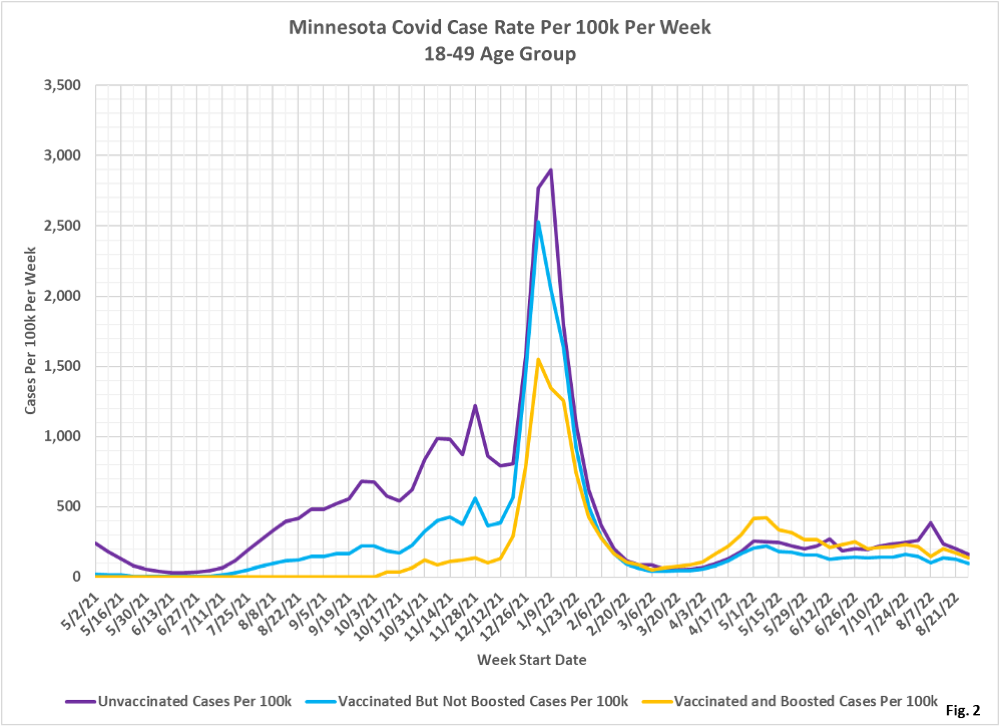
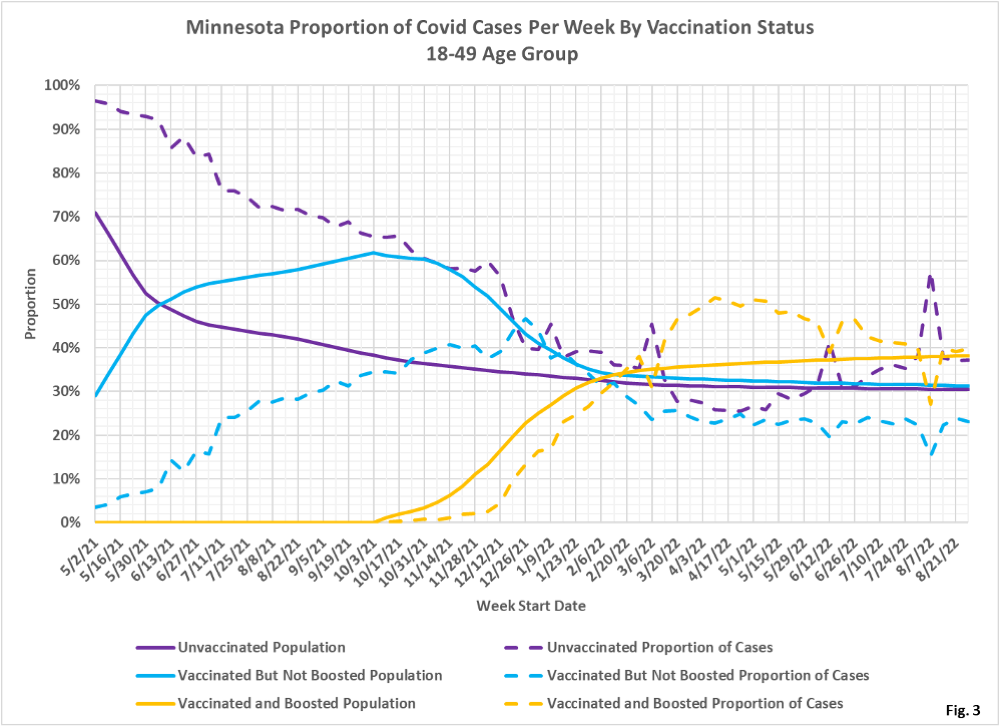
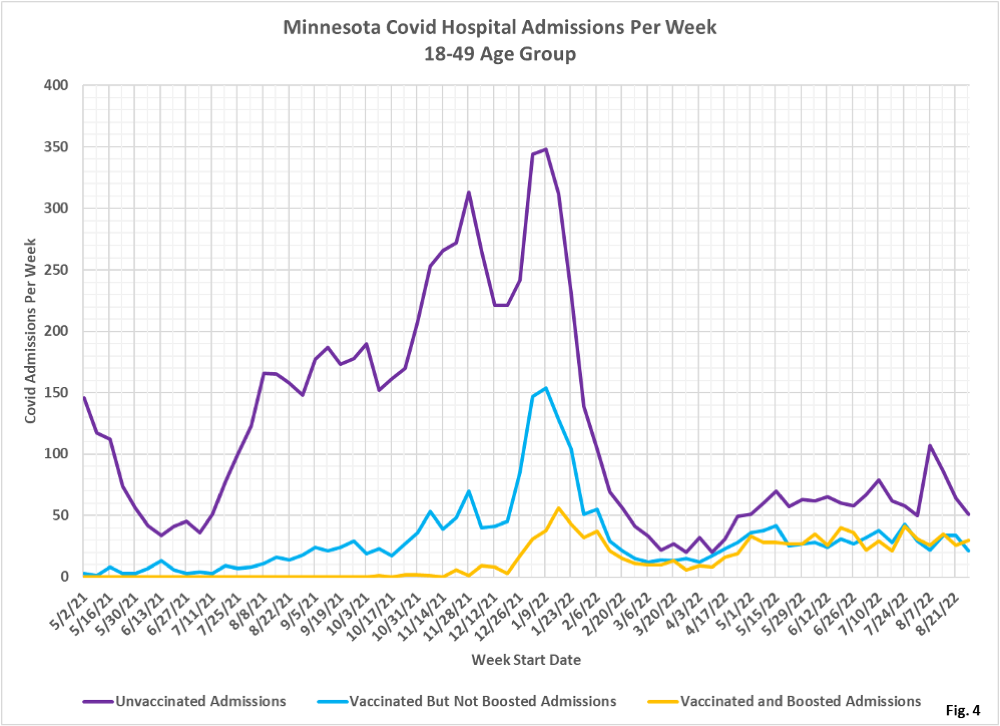

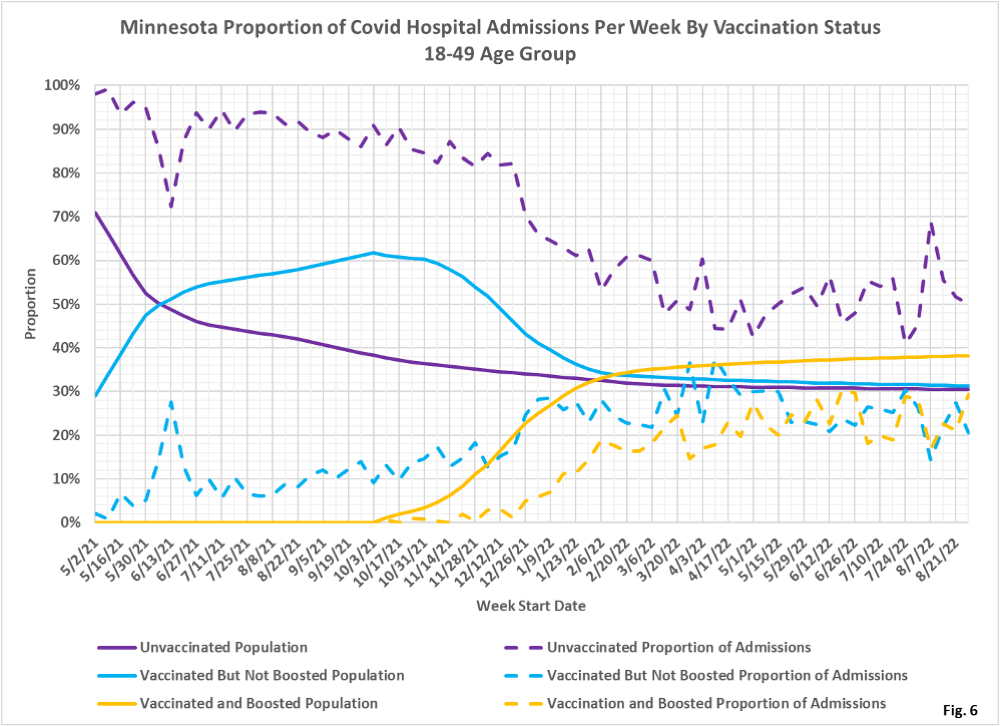
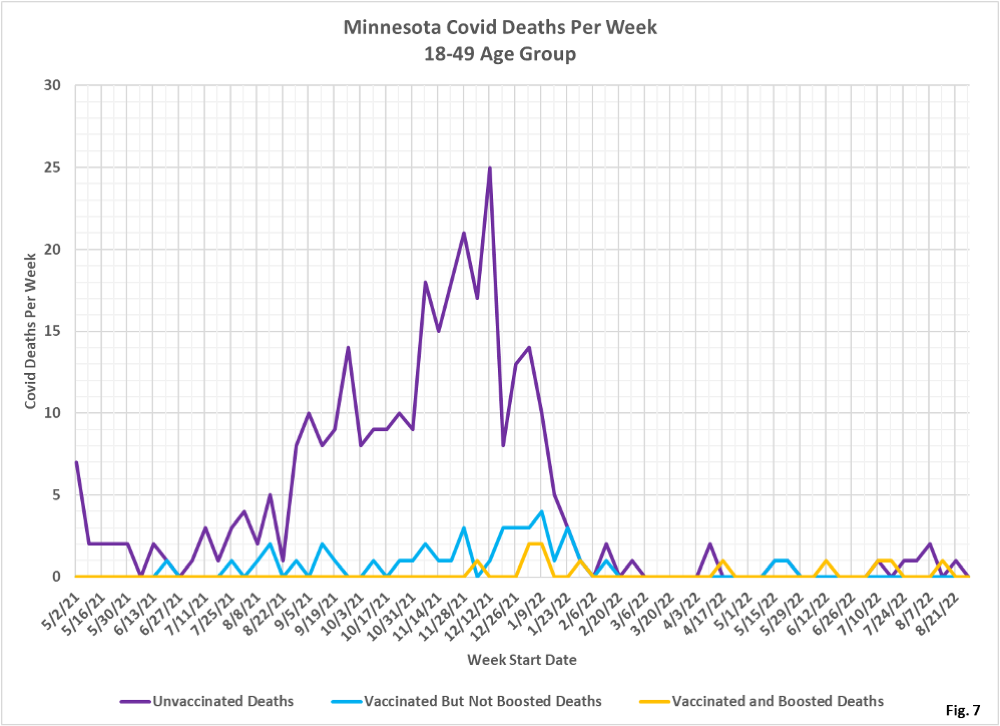
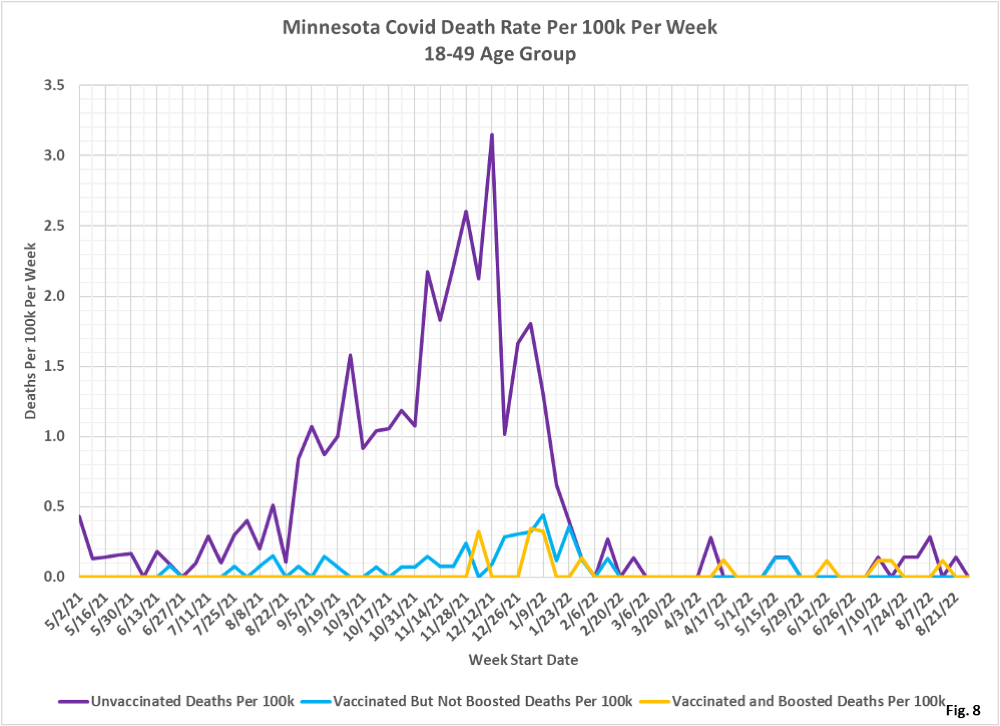
 Dave’s notes:
Dave’s notes:
- The following charts illustrate, for the 18-49 year old age group, that being vaccinated and boosted appears to offer quite substantial protection for being hospitalized with Covid in the most recent weeks’ data available, but the boosted and the unvaccinated have almost identical rates of testing positive in the most recent data. There are too few deaths in this age group to draw any conclusions.
- This post is an update to the 18-49 age group breakthrough charts most recently published on 9/09/2022 here: https://healthy-skeptic.com/2022/09/09/breakthrough-events-september-8-ages-18-to-49/.
- There are 9 charts in this set, 3 charts each for cases, hospital admissions, and deaths. Each set of 3 charts consists of the actual events per week (cases, admissions, or deaths); the rate per 100k each week, and the proportion of events compared to the proportion of the vaccinated population.
- Fig. 1: This chart plots the cases in the 18-49 age group per week among the unvaccinated, vaccinated but not boosted, and vaccinated and boosted populations each week. Since the week of 3/13/2022 (except for the anomalously high number of unvaccinated cases the week of 6/12/2022 and 8/07/2022) there have been more cases each week among the boosted, rather than among the vaccinated but not boosted, or unvaccinated.
- Fig. 2: This chart displays the case rates per 100k for each subgroup in the 18-49 age group. The unvaccinated have had a slightly higher case rate than the boosted, ignoring the anomalous data for the week of 8/07/2022. The vaccinated but not boosted have consistently had the lowest case rate of the three subgroups.
- Fig. 3: This chart displays the proportion of the 18-49 population who are unvaccinated (solid purple), vaccinated but not boosted (solid blue), and vaccinated and boosted (solid gold). For each population group we also display the proportion of cases each week (dashed lines of same color). For the week of 8/28/2022, the most recent data we have, 40% of this age group was vaccinated and boosted (solid gold line) and this group also accounted for 39% of the cases (dashed gold line). We would interpret this to show that being boosted did not reduce an individual’s chances of testing positive for Covid for that week. Also for the week of 8/28/2022, the vaccinated but not boosted (solid blue line) made up 31% of the population of this age group, but accounted for only 23% of the cases for that age group, while the unvaccinated made up 31% of the population (solid purple line) but accounted for 37% of the cases (dashed purple line).
- Fig. 4-6: These charts display the hospital admissions, hospital admission rates per 100k, and hospital admissions proportions for the 18-49 age group, in an identical format to the case charts in Fig. 1 through Fig. 3. The unvaccinated have had the highest number of admissions throughout the pandemic, and in recent weeks have had substantially more admissions than the vaccinated or boosted (Fig. 4). The admissions per 100k for the unvaccinated are highest throughout the pandemic, and in recent weeks the unvaccinated have fared relatively poorly (Fig. 5). Fig. 6 shows that admissions among the unvaccinated have been disproportionately high throughout the pandemic. For the week of 8/28/2022 the unvaccinated made up 31% of the age group but accounted for 52% of the admissions. The boosted made up 38% of the age group but only accounted for 29% of the admissions.
- Fig. 7-9: These charts display the deaths, deaths rates per 100k, and deaths proportions for the 18-49 age group, in an identical format to the case charts in Fig. 1 through Fig. 3. The unvaccinated had the greatest number of deaths by far during the Omicron wave in late 2021/early 2022, but in recent weeks there are very few deaths in any of the subgroups, but somewhat more unvaccinated deaths than vaccinated or boosted (Fig. 7). Fig. 8 shows that the rates of death per 100k for each subgroup is very low in the most recent months of data, matching Fig. 7. Fig. 9 shows that deaths proportions are highly variable, and that deaths among the unvaccinated are over-represented through much of the pandemic. Throughout much of 2022 there are so few Covid deaths in this age group that it is difficult to draw any conclusions.
- All data is obtained from the Minnesota Department of Health (MDH) Vaccine Breakthrough Weekly Update web site https://www.health.state.mn.us/diseases/coronavirus/stats/vbt.html. A data file on this site, vbtadultcirates.xlsx, contains all of the age group data.
- MDH defines the fully vaccinated (what we have termed vaccinated but not boosted) as those who have not received a booster after completing their primary vaccination series, and had been vaccinated at least 14 days prior to testing positive.
- MDH defines the boosted as those who have received any additional vaccination shots after completing their primary vaccination series, and also received the booster at least 14 days prior to testing positive. In addition, booster doses were only counted after 8/13/2021, the date the CDC first began recommending booster shots.

